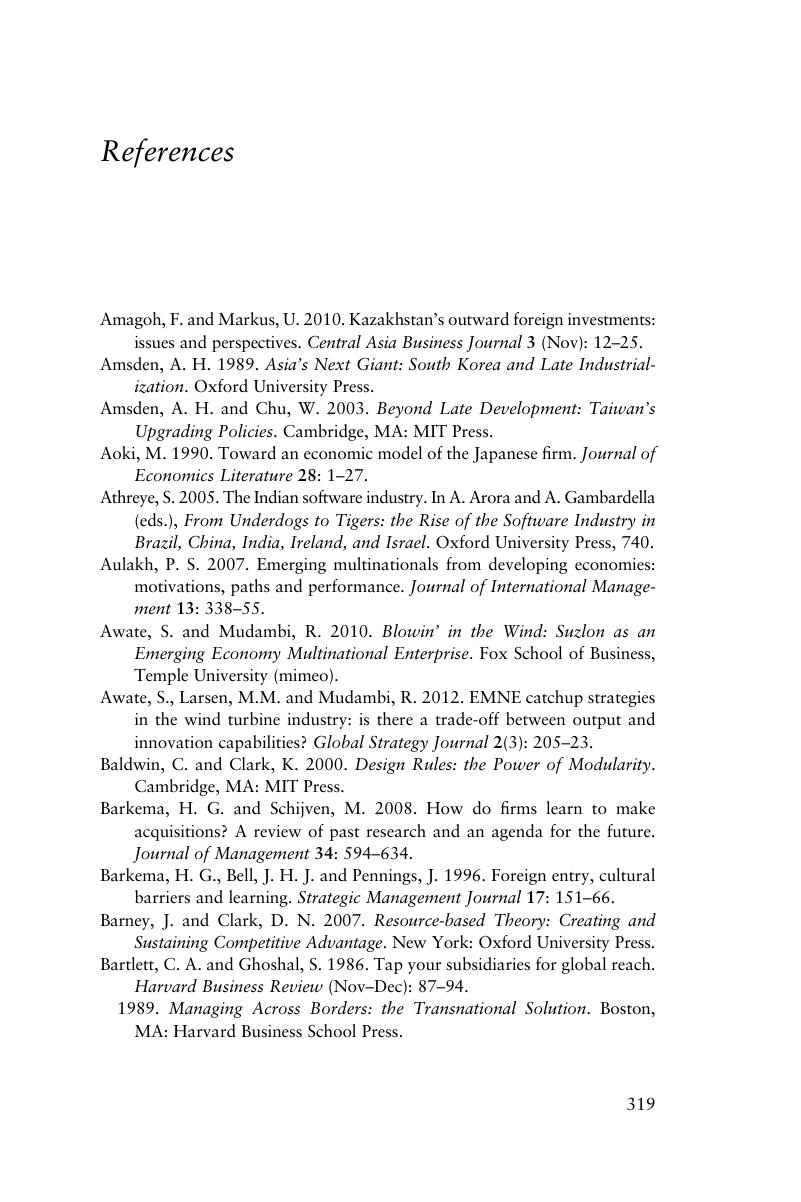Book contents
- Frontmatter
- Contents
- List of figures
- List of tables
- Notes on contributors
- Acknowledgements
- Introduction
- Part I Innovation and competitive advantage
- Commentaries on Part I
- Part II Value-chain configuration and competitive advantage
- Commentaries on Part II
- Part III Mergers and acquisitions and competitive advantage
- Commentaries on Part III
- References
- Index
- References
References
Published online by Cambridge University Press: 05 April 2013
- Frontmatter
- Contents
- List of figures
- List of tables
- Notes on contributors
- Acknowledgements
- Introduction
- Part I Innovation and competitive advantage
- Commentaries on Part I
- Part II Value-chain configuration and competitive advantage
- Commentaries on Part II
- Part III Mergers and acquisitions and competitive advantage
- Commentaries on Part III
- References
- Index
- References
Summary

- Type
- Chapter
- Information
- The Competitive Advantage of Emerging Market Multinationals , pp. 319 - 339Publisher: Cambridge University PressPrint publication year: 2013



